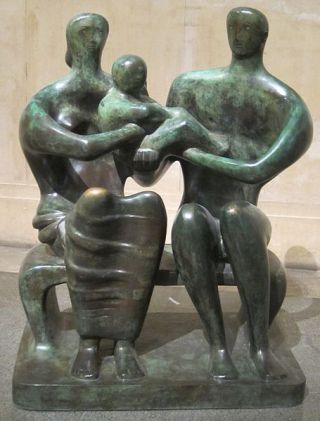Psychosis
Open Dialogue: A New Approach to Mental Healthcare
Guest blog by British psychiatrist Dr. Tom Stockmann.
Updated June 24, 2024 Reviewed by Devon Frye

Open Dialogue was developed in Western Lapland in the 1980s. It involves a consistent family/social network approach to care, in which the primary treatment is carried out through meetings involving the patient together with his or her family members and extended social network.
Open Dialogue emerged out of a decade-long, organic process, while clinicians (including Jaakko Seikkula and Markku Sutela) searched for the best treatment for acute mental illness and, in particular, psychosis. Many of the changes they made along the way were reactions to encountering ambiguity and uncertainty. They decided to free themselves from searching for a non-existent truth, concentrating instead on curiosity and improvisation. Linked to this, they incorporated the recognition that language shapes our reality, and that one’s language, and thought, is dependent on seeing the world through a personal "lens." The main aim of clinician involvement became the creation of a shared understanding of the problem, through a shared language.
The Open Dialogue approach has spread across much of Scandinavia and other European countries including Germany, Poland, and Italy. In the U.S., New York City's successful Parachute Project is founded on similar principles.
The New York City model integrates peer workers, which has inspired the development of "Peer-supported Open Dialogue" (POD) in the United Kingdom. Teams from four U.K. National Health Service Trusts are currently training in POD, and aim to launch a multi-centre randomized control trial in 2016.
The Promise of Open Dialogue
The development of Open Dialogue is linked to evidence of its superiority to normal treatment of acute psychosis. After 5 years (1992-1997) of Open Dialogue treatment in Lapland, 81 percent of participants had no remaining psychotic symptoms and 81 percent had returned to full employment. Only 35 percent had used antipsychotic drugs (Seikkula et al., 2006). Similar results emerged from Tornio between 2003 and 2005. In the U.K., only 20 percent of people diagnosed with schizophrenia would be expected to be symptom-free after five years, with close to 100 percent of all patients with psychosis receiving antipsychotics.
Communication: From Words to Worlds
Developmental psychologists Lev Vygotsky and Colwyn Trevarthen describe a process by which the caregiver and baby enter a dialogue straight after birth. Communicating through verbalizations, facial expressions, movements, and mutual attention to the world of objects, they begin to influence each other’s emotional states and behaviours.
There is a gradual maturation of this dialogue, from the use of objects, to signs, and then to language. The mother’s voice is gradually internalized by the child, forming an inner speech through which it regulates its own emotions and behaviour. Throughout this process, words become building blocks for complex, higher mental functions. From words come our thoughts.
The words that form our thoughts are not static symbols. For Russian philosopher Mikhail Bakhtin, words carry only fragments of meaning, with a more complete meaning arising only through an exchange of words (dialogue) with others. This could mean that our language, our thoughts, and our world are constructed largely through our interpersonal relationships, rather than on empirical truths.
Man is the measure of all things.
—Protagoras, Truth
The "Construction" of Psychosis
In the same way, might psychosis and other mental disease also be constructed within a social network? Perhaps most psychotic symptoms could be seen not as symptoms of an illness, but as a strategy to survive strange and traumatic experiences—as a sane reaction to insane circumstances. As such, psychosis could be seen as more normal than it presently is—in other words, as a natural human tendency. Indeed, psychosis is much more common than most people imagine: studies of young people reveal that over 25 percent have had psychotic experiences.
Unfortunately, psychiatry as a profession tends to reduce psychotic symptoms to cold and clinical observations, ignoring the possibility of meaning, and preferring to label and pathologise the problems. This risks alienating and invalidating the person and family in distress, who may all be attempting to communicate experiences for which there are not yet any words. In so doing, could we be missing an opportunity to harness their own potential to help themselves?
Bakhtin said that such potential can be realized through a genuine dialogue between people, in which all voices are heard and given equal weight. In such a "polyphony," conventions can be broken and a new solution can be created.
The "Re-Construction" of Psychosis
Emotional trauma often resists conversation. When a person is traumatized, his or her emotions become unbearable. It may be impossible to put the experience into words, such that the person has difficulty in understanding himself and in making himself understood by others. These others perceive little more than incomprehensible symptoms of mental illness.
Putting words to emotions can lead to the confusion and distress around those emotions being seen from a new, more manageable perspective. In Open Dialogue, the aim is to replace symptoms observed within a social network with a shared language—and therefore a new, shared understanding.
The "Open" in "Open Dialogue"
A key concept in Open Dialogue is transparency. No decisions about the person in distress are made outside of the network meetings, and within this setting, the clinicians openly discuss their observations. The clinicians are part of the polyphony. They are "with, not doing to." They reflect with their authentic selves, fostering a true human-human relationship by presenting their own emotional responses. The aim is to avoid objectification and distance between clinicians and others.
Some readers may have noted the indebtedness of Open Dialogue to the insights of Carl Rogers, the founder of person-centred therapy. Open Dialogue clinicians need to embody the three basic Rogerian features of a therapist: congruence (transparency), unconditional positive regard, and empathy.
The "Dialogue" in "Open Dialogue"
The mystical physician to the king of Thrace said the soul was treated with certain charms, my dear Charmides, and that these charms were beautiful words.
—Plato, Charmides
The emphasis in Open Dialogue is on the generation of dialogue, rather than promoting change directly. The aim is for the dialogue to allow the members of the network to summon their own psychological resources with which to deal with the problem.
If the dialogue is to be transformative, the clinicians must remain within the living moment. They do not enter the meeting with an agenda, and the conversational path taken is completely improvised.
The starting point is the actual language used by the family to explain the problems. The clinical team listens to the words that are used and encourages their flow. It refrains from offering interpretations and hypotheses which may silence a new voice with an alternative explanation and return the conversation back into the rational, guarded realm.
Every utterance is acknowledged, with all voices unconditionally accepted. The conversation should be a polyphony, not a monologue. In a polyphony, members can see that their words are accepted by others, allowing them the safety and confidence to reflect on their meaning. By generating a shared language, the meaning of the symptoms can be explored by the network. It is this process, rather than the eventual content, that is most important.
During the dialogue, clinicians need not join the dialogue with speech, in which case they remain present in other ways, for instance, through their posture, gestures, and facial expressions. Clinicians need to be mindful of the moment, to sense the emotion in every communication, both verbal and non-verbal, both in themselves and in others.
Tolerating Uncertainty
During the evolution of family therapy, therapists encountering complex situations decided to free themselves from a futile search for truth and to embrace uncertainty. The use of one technique or another made way for a more collaborative conversation. This idea has been transferred to Open Dialogue. There is no seeking after a particular truth, merely an attempt to hear multiple voices, each with its own truth.
In Open Dialogue, every crisis is assumed to be unique. Hasty or formulaic decisions are avoided, and it is accepted that understanding is a gradual, organic process. It may be that no important decisions are taken for the first two or three meetings, even when the distress is severe. This is not to say that medication and hospital admission are never used, but efforts are made to expand the dialogue, and to sit with the pain, the risk, and the uncertainty.
Everyone in the meeting shares this uncertainty. Some responsibility is returned to the network, such that it is no longer all on the senior doctor's shoulders. Together, all come to realize that the situation can be endured. The ambiguity is undone through shared language. Dialogue dissolves the need for action.
Early on, meetings may be very frequent to create a sense of safety. Over time, the network finds the language to express experiences and builds up its inherent resources. With time, the crisis can become an opportunity for positive change: a chance to retell the stories, reshape the identities, and rebuild the relationships that tie the self to the world which he inhabits.
Healing
In Open Dialogue, healing occurs when the speaker is moved. If the clinician remains in the moment, open to authentic human warmth, present in Bakhtin’s "once occurring participation in being," he or she will be sensitive to the "moments of aliveness" in which a participant is touched by something new and potentially transformative.
Let us finish by considering the parent-baby archetype, and its similarities to the clinician-patient relationship. The parent feels love for his or her child as they engage in mutual emotional regulation through dialogue. Similarly, in Open Dialogue, the clinician is aware that his or her loving feelings towards the patient are a sign of effective mutual emotional regulation, and the first spark of healing.
Love is the life force, the soul, the idea. There is no dialogical relation without love, just as there is no love in isolation. Love is dialogic.
—David Patterson, Literature and Spirit
Neel Burton, who invited and edited this article, is author of The Meaning of Madness.




